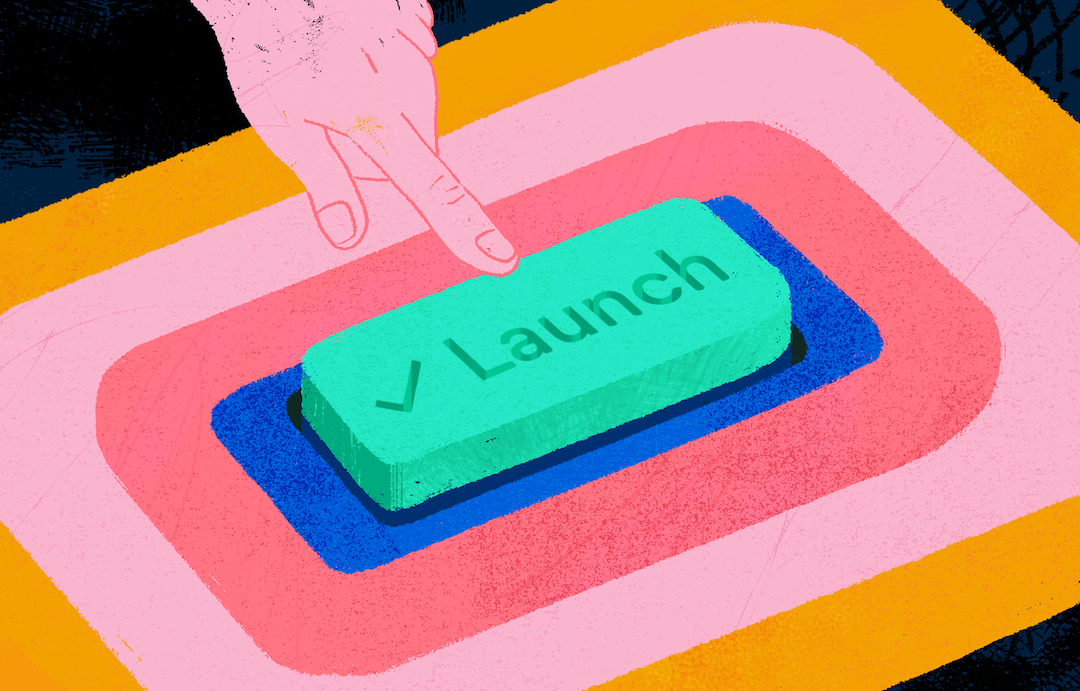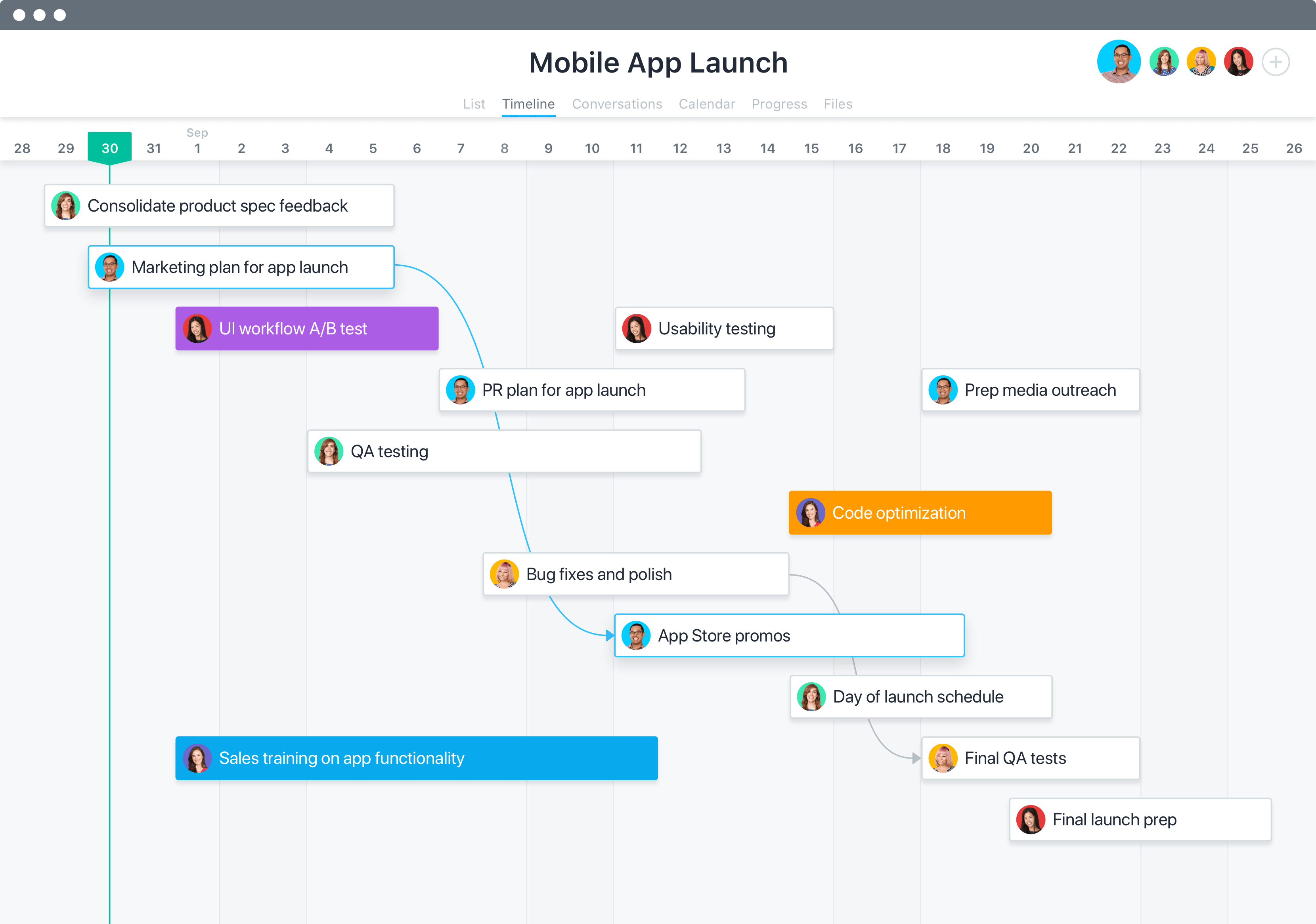Featured
Plan your product launch with a template
 Any good product manager (PM) knows that building a beautiful roadmap is only half of the journey—their team still has to build the product and launch it. The problems compound for PMs planning launches in the world of spreadsheets and docs—there are too many separate pieces to connect, coordinate, and update. Then when they go to turn their plans on paper into action, they might realize the true amount of work ahead of them, and are stuck to manage the details instead of the strategy—with a team that might not be on board.
Any good product manager (PM) knows that building a beautiful roadmap is only half of the journey—their team still has to build the product and launch it. The problems compound for PMs planning launches in the world of spreadsheets and docs—there are too many separate pieces to connect, coordinate, and update. Then when they go to turn their plans on paper into action, they might realize the true amount of work ahead of them, and are stuck to manage the details instead of the strategy—with a team that might not be on board.
Following a launch template helps you build your plan, but gets even more powerful when you can share that plan with teammates and have it update in real time as work gets accomplished.
Get started with a product launch template.
Tips and examples to perfect your product launch
Below, you can follow along with tips from us and the Fast Go To Market team at the apparel brand, Stance to help you plan and manage your product launch. In less than five years, Stance took a vein of accessories that was ignored, igniting a movement of art and self-expression that has drawn athletes, performers, and iconic cultural influencers to the brand. Stance’s Fast Go To Market team now launches products 90% faster after adopting Asana.
Make all your launch steps and deadlines clear
Starting with an Asana template is the easiest way to get a launch plan going. Instead of reinventing the process every time, you can get started immediately, adding key information to tasks already in the template, and any customizations you want to make.
Pro customer tip: Stance uses a custom template saved in Asana that gets copied for each new launch, so all they have to do is input the details, set dates, and assign tasks out. This helps them strike when a new market opportunity is hot.
Manage your launch timeline
It’s difficult to keep track of all the moving pieces for each launch, especially when you can’t see how they fit together on a schedule. By setting date ranges and dependencies for each task, you can see your launch plan come together in Timeline. If you notice date and dependency conflicts, you can drag and drop to fix problems before they happen!

Keep key launch assets together
Every launch comes chock full of assets like product designs and specs that can quickly get lost if they’re not linked to where work is happening. Instead of making costly mistakes or pinging teammates to ask if they have the file, just attach your files to launch tasks. Our integration partners make switching between Asana and your files seamless.
Pro customer tip: Stance PMs had to do a lot of time-wasting shoulder tapping to find files and keep them updated. Now they just need to navigate to the launch project in Asana, and voila—all of their files are in context with the work in one place!
Monitor any at-risk tasks
Launches are high stakes—tons of tasks to manage, and if even one deadline gets missed, it can throw off an entire plan. Instead of waiting for something to slip, you can proactively monitor your priorities across all launches by using search reports and task comments to ensure they’re still on track.

Pro customer tip: PMs at Stance run reports to see incomplete tasks with approaching deadlines across their launches to make sure they won’t have to reschedule time with the manufacturer. They can also follow up with the teammate assigned the tasks directly from the report in Asana instead of sending the awkward “what’s the status…” email.
Keep cross-functional work unified
It takes many teams across your organization to really bring a launch to life. This maximizes the impact of your launch, but also adds complexity for coordination and communication. Sadly, this means many teams still work in silos for product launches. By adding other functional teams as project members and including their launch work in your project, you can keep updates in one place and ensure everybody is working together towards the same goals and launch dates.
In Asana, we have templates for both product launches and marketing product launches for you to try out. You can keep tasks from either in multiple projects so both teams can collaborate more easily while still focusing on their team-specific work.
Provide regular updates
Lots of people across your team and organization are keeping track of the various aspects of your launch. Instead of responding to ad-hoc questions or sending a long-winded email, you can use Progress View to share status updates. @mention tasks where work is happening so anyone can jump in to see how they’re progressing, and @mention teammates to give kudos for their hard work!
Ready for launch
With our template and these tips, we hope you and your team can embark on your best launch yet. After moving their product launch process into Asana, Stance reduced their go-to-market time by 90%. They now ship more than 20 collections, with anywhere from 3-10 designs at a time.
Want to learn more about how they did it? Register for our webinar and see how Stance manages their launches from initial idea to product hitting store shelves with Asana.

